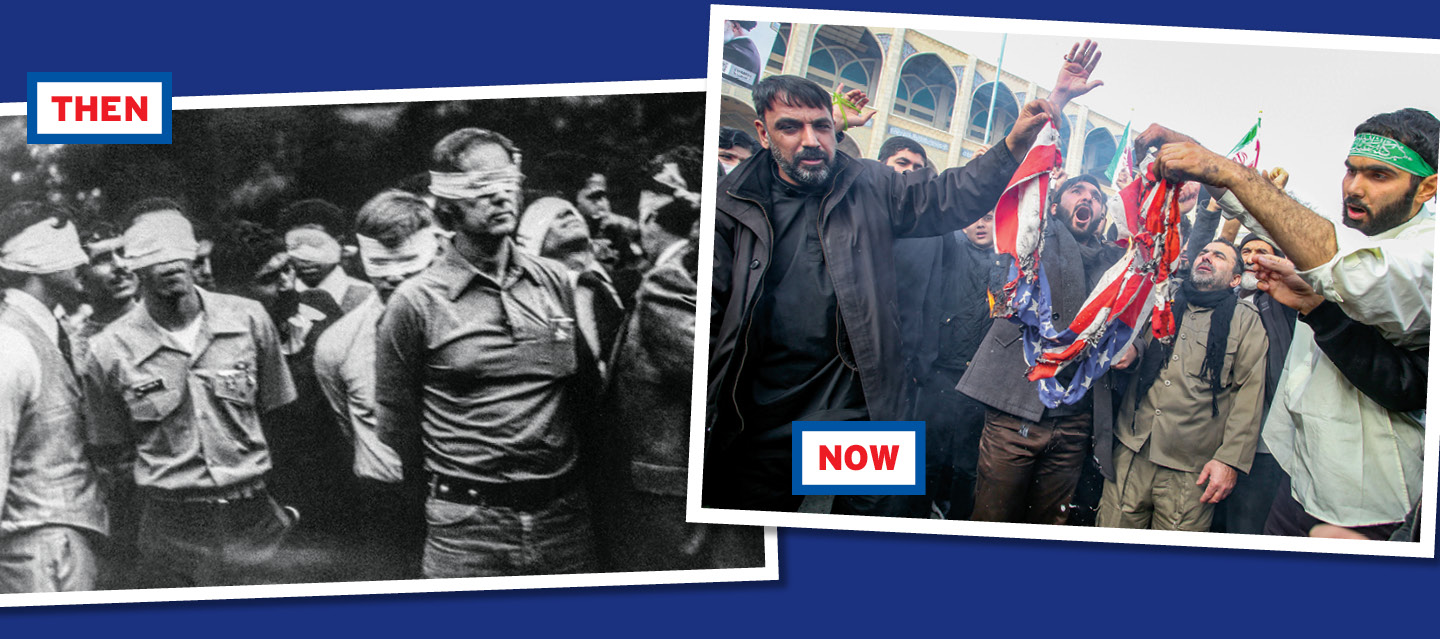Anadolu Agency via Getty Images
Last month, when the U.S. killed Iran’s top general, tensions between these longtime foes soared, and the two countries came as close to outright war as they have in their four-decade-long conflict.
Major General Qassim Suleimani (right), who led Iran’s elite Quds force of the Revolutionary Guard, was killed by an American drone that fired missiles into his convoy as it was leaving the airport in Baghdad, the Iraqi capital. As the architect of Iran’s military operations across the Middle East, Suleimani was responsible for the deaths of hundreds of Americans since the war in Iraq began in 2003. He was also close to Iran’s Supreme Leader, Ayatollah Ali Khamenei, and widely considered to be the second most powerful man in Iran.
The killing came after more than a year of rising tensions between Iran and the U.S. In 2018, President Trump pulled the U.S. out of the 2015 Iran nuclear deal, which was designed to halt Iran’s nuclear weapons program in exchange for lifting economic sanctions that had crippled Iran’s economy. Since pulling out of the agreement, the U.S. has imposed even tougher sanctions on Iran, and Iran has responded with a series of increasingly provocative actions.
Here’s what you need to know to understand how this latest crisis fits into the long history of conflict between the two countries and what the flare-up might mean for the future.
Last month, the U.S. killed Iran’s top general. That caused tensions between these longtime foes to soar. And the two countries came as close to outright war as they have in their four-decade-long conflict.
Major General Qassim Suleimani led Iran’s elite Quds force of the Revolutionary Guard. He was killed by an American drone that fired missiles into his convoy as it was leaving the airport in Baghdad, the Iraqi capital. Suleimani was the architect of Iran’s military operations across the Middle East. That means he was responsible for the deaths of hundreds of Americans since the war in Iraq began in 2003. He was also close to Iran’s Supreme Leader, Ayatollah Ali Khamenei, and widely considered to be the second most powerful man in Iran.
The killing came after more than a year of rising tensions between Iran and the U.S. In 2018, President Trump pulled the U.S. out of the 2015 Iran nuclear deal. The deal was designed to halt Iran’s nuclear weapons program. In exchange, the economic sanctions that had crippled Iran’s economy would be lifted. Since pulling out of the agreement, the U.S. has imposed even tougher sanctions on Iran. Iran has responded with a series of increasingly provocative actions.
Here’s what you need to know to understand how this latest crisis fits into the long history of conflict between the two countries and what the flare-up might mean for the future.

